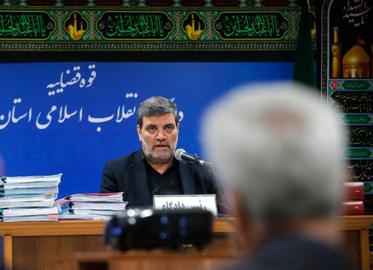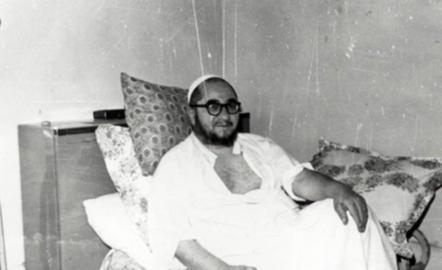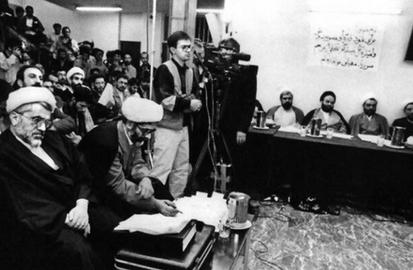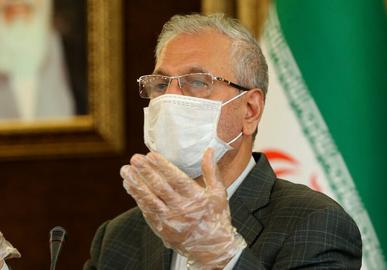Why has Iran’s judiciary been unable to gain public trust over the last 40 years? What are the basic problems of the institution, the original primary goals of which were to"litigate, protect public rights and implement justice" in order to "uphold individual and social rights”?
In this series, IranWire will look at the structural problems of the judicial branch of government, relying on concrete examples and statements from legal experts to build a picture of the judiciary and whether it functions according to the principles on which it was originally based.
In the first part of the series, IranWire looked at the independence and impartiality of Iran’s judiciary. The second article looked at the protracted trial process, which successive judiciary heads have promised to reform, without success. The third article addresses corruption in the judiciary while the fourth scrutinized the appointment system for justices in Iran.
In the fifth article in the series, we examine the scope and nature of Iran's "special" courts: those that lie outside of the ordinary civil and criminal framework, operate to different rules and are used first and foremost to punish critics of the regime.
**
In addition to the ordinary civil, criminal and military courts in Iran, there exist several “special” courts that do not have a clearly proscribed function or reason for their existence. These courtrooms are generally subject to a media blackout and very little clear information is issued about the cases heard in their chambers.
Among these “special” courts are the Supreme Disciplinary Court for Judges, the Special Clerical Court and the Revolutionary Courts. Of these, only only the Special Clerical Court is administered outside of the usual jurisdiction of the judiciary and under the direct supervision of the Supreme Leader himself.
Mahnaz Prakand, an lawyer now based in Norway, told IranWire that the only such “special” court whose function is enshrined under Article 72 of Iran’s constitution is the military court deals with crimes involving law enforcement, army and IRGC personnel.
"Under the same article,” he notes, “the investigation of other crimes is assigned to the general courts. Therefore, according to the provisions of the constitution, the only courts that exist are the general courts of justice and the military courts."
The Structure of Iranian Courts
Iran’s general courts are officially tasked with arbitrating on all forms of cases and disputes. These are spread across the country’s smaller counties, wards and districts. The criminal courts are those in which cases need to be dealt with in accordance with Iran’s Code of Criminal Procedure, and the legal courts are those in which cases are heard that relate to the Code of Civil Procedure.
The legal courts handle cases that deal with such issues as material rights, compensation, landlord-tenant disputes, trade disputes, alimony, divorce, ownership rights and inheritance.
According to Article 294 of the Code of Criminal Procedure, the criminal courts in Iran are divided up according to the severity of the crime. “Court One” handles the most serious alleged offenses such as murder, mutilation and other intentional crimes, while “Court Two” handles other, more commonplace offenses.
The criminal courts have several important sub-structures. Among them are the juvenile court, which is responsible for trying defendants under the age of 18, and the military court, which deals with charges related to military and law enforcement officers.
But at the same time, the Revolutionary Court, also ostensibly a subset of the Criminal Court, was established by the order of Ayatollah Khomeini and notorious hanging judge Mohammad Sadegh Khalkhali in March 1979. Its original purpose, according to Article 303 of the Code of Criminal Procedure, was to deal with “political and security affairs” and drug-related crimes as well as large-scale embezzlement.
The Revolutionary Court: Illegitimate From the Very Beginning
The Revolutionary Court’s primary function is now to try those charged with some of the most ill-defined crimes in Iran’s penal code. These include moharebeh (war against God and the state), baghei (armed insurrection against the government) and insulting the leadership, as well as drug-related crimes.
Sadegh Khalkhali, the Iranian cleric appointed by Khomeini to be the first de facto head of the Revolutionary Court, earned a reputation for his apparent relish in ordering the summary executions of hundreds of individuals who faced the court without so much as legal representation or a jury.
"The Revolutionary Court,” says Mahnaz Parakand, “was established in revolutionary conditions, at a time when the constitution of the Islamic Republic had not yet been drafted or approved. Its activities were supposed to be dissolved after the ratification of the constitution, due to their illegality. But unfortunately, these courts are still functioning today.”
The Revolutionary Court is supposedly overseen by the judiciary. But in practice, its chambers are operated by and for extra-legal and security institutions.
Giti Pourfazel, a lawyer and civil rights activist, was arrested last August and later sent to prison in Iran last year. Before she was committed to serve her sentence, she told IranWire: "The main task of this court is to deal with cases related to critics of the government. It thus deals with crimes that involve individuals on one side, and the state and the system on the other.
“This means that the plaintiff, who is always the system itself, is suing a real person – and as such the plaintiff itself is also overseeing the case, as both judge and court."
Musa Barzin Khalifehloo, a lawyer now living in Turkey, argues that the verdicts issued in these courts are by their very nature unfair and illegitimate. Trials in the Revolutionary Courts usually last just five and ten minutes, with the defence counsel appointed from a pre-approved “pool” of public lawyers who are therefore, as state employees, on the plaintiff’s side.
"The Revolutionary Court,” he adds, “was established on Khomeini's orders, which he did not have the constitutional authority to do, and the constitution did not provide for such a court.”
Only the legislation branch officially has the authority to set up sub-systems like the Revolutionary court: an authority that has gone completely ignored since the outset of the Islamic Republic.
“The very formation of the Revolutionary Court was against the law,” says Khalifehloo. “These courts were initially formed to deal with the Pahlavi and SAVAK [the Shah’s secret police] affiliates. But they then expanded their activities to dissident youths and drug addicts.
“Soon afterward, the cases of windfalls and confiscation of capitalists' assets before and after the revolution were also transferred to these courts, which in itself was corrupting and destructive.”
The Revolutionary Court also his its own sub-set, the Special Court for Economic Corruption, whose purview includes cases of economic disruption and financial crime. On September 5 this year, Ayatollah Khamenei gave the green-light to the continued existence of these courts, at the request of Ebrahim Raeesi, Iran’s current head of judiciary.
Khalifehloo believes that these courts are also generally appropriated as a means of punishing political dissidents. “After the 1979 Islamic Revolution,” he says, “the Revolutionary Court was established by order of Ayatollah Khomeini to try officials of the Pahlavi government, but later gained broader powers. It became a place to try opponents of the government and confiscate their property.”
The Special Clerical Court: Punishing Outspoken Clergy Members
The Special Clerical Court was set up by order of Ayatollah Khomeini in June 1979 to hear accusations made against Shia clerics. This court falls outside of the jurisdiction of Iran’s judiciary and is under the direct supervision of the Supreme Leader.
Ever since its establishment, the Special Clerical Court has been used to prosecute prominent clerics who are critical of any aspect of the regime. The trial of Mohammad Mousavi Khoeiniha, the former general manager of the Salam newspaper and secretary general of the reformist Association of Combatant Clerics, was heard in this court in 1999.
Among the court's more recent rulings have been the permanent removal from office of liberal cleric Hassan Aghamiri, and the imprisonment of Mohammad Reza Nekounam, who had called for high-speed internet and the removal of internet restrictions in Iran.
Older cases include the lifelong house arrests of Hassan Tabatabaei Qomi, who criticised Iran’s velayat-e faqih governance policy up until his death in 2007, and of Khomeini critic Mohammad Kazem Shariatmadari. The court has also imprisoned Hadi Ghabel, a member of the reformist Islamic Iran Participation Front, the dissident cleric and author Ahmad Ghabel, reformist politician Hadi Khamenei, the renowned Shia cleric and one-time Khomeini successor Hussein-Ali Montazeri, and outspoken cleric and journalist Hasan Yousefi Eshkevari.
Mahnaz Parakand told IranWire: "The special courts for the clergy are not legal either, but they are also still functioning. These courts have their own rules, and even lawyers who are not clerics – who are exclusively male – are prevented from appearing in these courts."
A lawyer based in Iran, who once represented an ousted cleric in the mid-2000s and asked not to be named, told IranWire: "The most serious problem I had during my client's case was the lack of access to case information.
“Clashes took place behind closed doors, with discrimination and accusations, slander and partisan retaliation. During my client's case, the judge personally called his wife and told her that it was better to divorce her husband, accusing him of having had an illicit affair. The couple's relationship did not last, but my client still denies all the allegations.”
This lawyer says the most common charges brought against the clerics in Special Clerical Court are "non-observance of clergy prestige" and "moral corruption": “Article 1 of the Rules of Procedure of Special Clerical Courts and Tribunals states that this court was established to prevent the infiltration of ‘deviant and criminal individuals’ in seminaries, to preserve the status of the clergy, and to punish offending clerics.
“But the reality is something else. In practice, this is a place to punish those clerics who are either critical of the government or sceptical about the Supreme Leader’s decision-making."
Special Courts: A Threat to Justice Itself?
Musa Barzin Khalifehloo has learned from experience that “special” courts are the locus of security forces’ intervention in Iranian public life. “The judges of these courts are usually elected outside of official processes – and usually enter the circle of corruption whether they like it or not. It’s a circle that is difficult to get out of.
“The Ministry of Intelligence and the Revolutionary Guards’ intelligence bureaus also try to deploy judges in these courts who have certain weaknesses, and can be controlled by tapping into those weaknesses.
“I have spoken to several Revolutionary Court judges and some of them are aware of the facts [of the cases before them] but have no choice but to accept. The IRGC's intelligence officers control them. If they have made a mistake either in their private lives or in the process of handling a case, this becomes a tool with which to coerce them.”
Hossein Raeisi, an Iranian lawyer based in Canada, argues that these “specialized” criminal courts are a danger to the principle of justice itself. "Existing statistics and experience,” he told IranWire, “have shown that the more specialized courts there are, the more their jurisdiction gradually increases.
“The same thing happened in the Pahlavi era. The military tribunal, for example, had powers outside of the constitution and also dealt with political matters. It was for this reason that the Shah, as soon as he felt threatened in the last days of his reign, deprived the military courts of all their powers. From the 1953 coup to the 1979 Islamic Revolution, the military courts did what the revolutionary courts do today. This flawed structure has simply continued since the revolution.”
Read other articles in the series:
Iran’s Prolonged, Infernal Tunnel of Litigation
Is Iran’s Judiciary an Impartial and Independent Institution?
Endemic Corruption Renders Iran’s Judiciary Ineffective and Unjust
Who are Iran’s Judges and Who Gives Them the Right to Make Decisions About People's Lives?
visit the accountability section
In this section of Iran Wire, you can contact the officials and launch your campaign for various problems



























comments